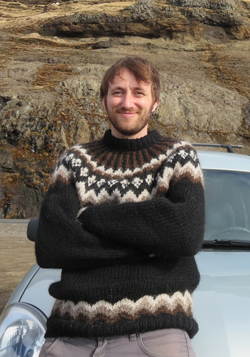Expanding our portfolios. Phil Heron reaches out on outreach
Heron, P., The ‘impact’ factor: Can we be more useful?
Geoscientist 29 (4), 9, 2019
https://doi.org/10.1144/geosci2019-020;
Download the pdf here

Impact. The section on the grant application that is becomingly increasingly important to funding bodies. How is your project going to benefit people? And by ‘people’ I mean real people. Not those twelve souls in your precise area of expertise that are genuinely interested (some may even say keen) to hear about your new research. Or the scattering of other geologists in different fields that might find your work useful. Actual people.
Schools
For a number of years, I have been going into high schools and primary schools armed with a bag of rocks, spaghetti and marshmallows, and some chat about plate tectonics. I love it. I don’t even do it because I said I would in a grant—I just like presenting things I find interesting to people. And it is impactful. I find a good percentage of students I meet love the exposure to geology. Some would rather I was Brian Cox or Tim Peake, but you can’t please everyone.
The Geological Society has a comprehensive school outreach programme—the
Science, Technology, Engineering and Maths (STEM) Ambassador Programme is phenomenal in getting positive role models into classrooms to enthuse students about science. There are a number of national initiatives, like Earth Science Week, to focus student’s attention on our dear subject, as well as a wealth of online material for teachers to peruse for lessons. With that in mind, is it time to start exploring other avenues outside the traditional classroom setting for our required outreach programs?
Other avenues
I live and work in Durham, a city that has, broadly speaking, a university, a cathedral and a few prisons. As part of my outreach activity, I thought I could try and combine one of the non-university institutes. Going in and talking to prison leaders (sidestepping the cathedral), it became clear that there is a real lack of science education on the inside due to a lack of funding and personnel. To try to bridge this gap, I’ve set up what appears to be England’s first science course to be taught inside the prison system.
The work within a young offenders institution has enabled the students to gain access to information on STEM apprenticeships, and mentor them in ‘thinking like a scientist’. As the course continues to gather pace, it could be genuinely useful and impactful to the prison system and to the students. I’m encouraging Geoscientist readers to reach out if they have guidance of any sort to young offenders who are keen for rehabilitation through science education. This may be anything from ideas for routes into science employment, to qualities that employers would need to see from non-graduate employees.
Grants demand academics to be impactful with our science and our outreach programs—is it time to expand our portfolio of classrooms and science fairs?
Philip J. Heron is a Marie Skłodowska Curie Research Fellow at Durham University; [email protected] (Phil’s science course is called ‘Think Like A Scientist’; https://philheron.com/think-like-a-scientist/)